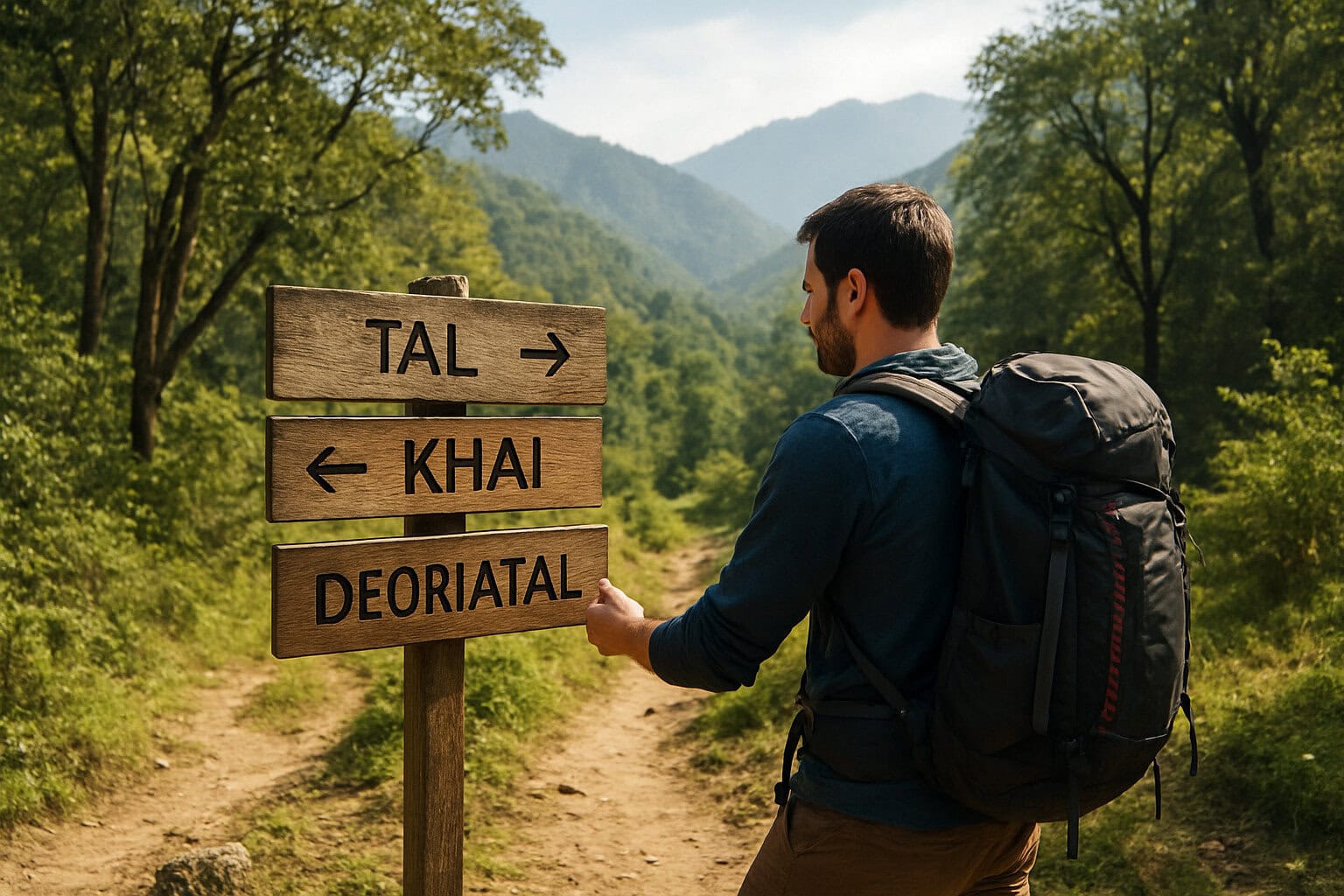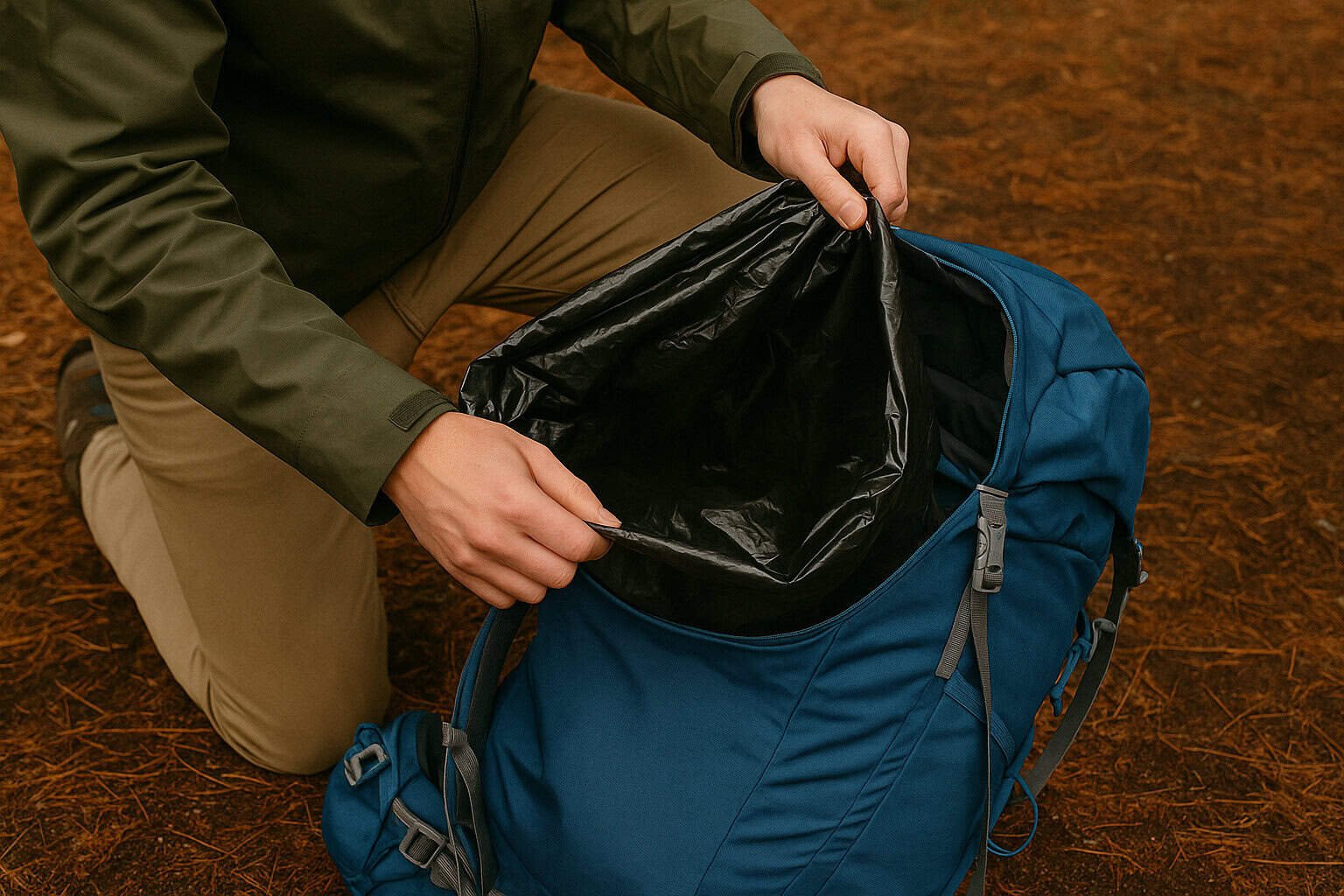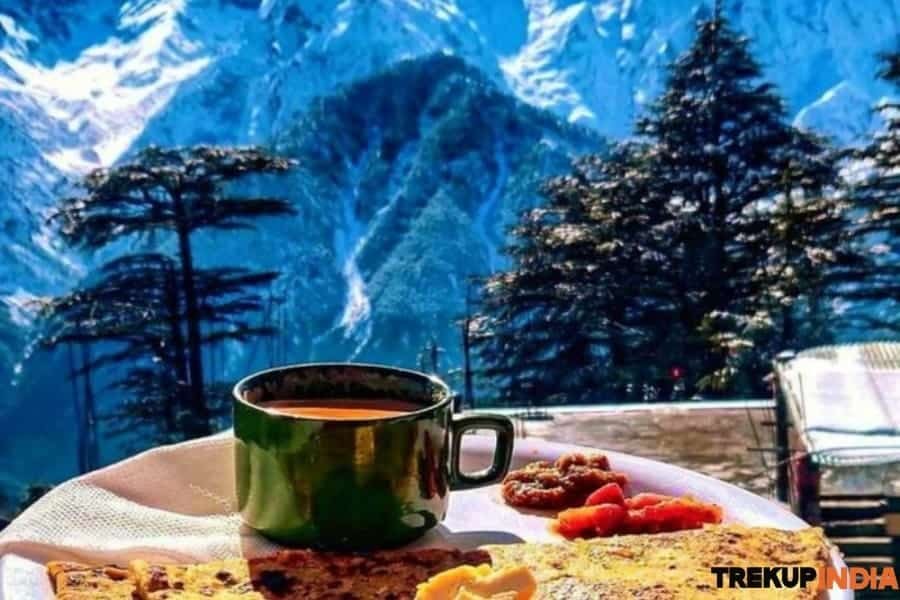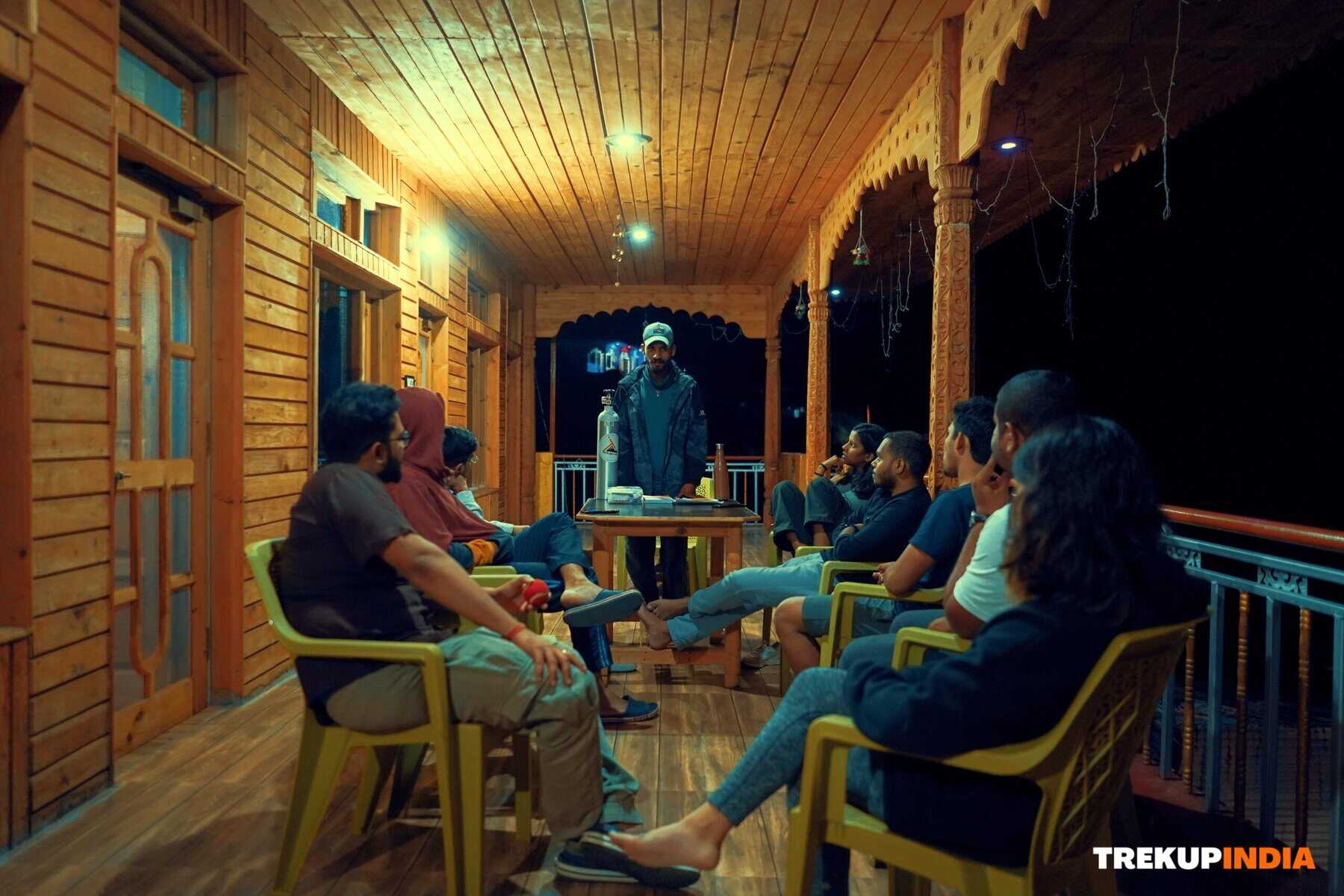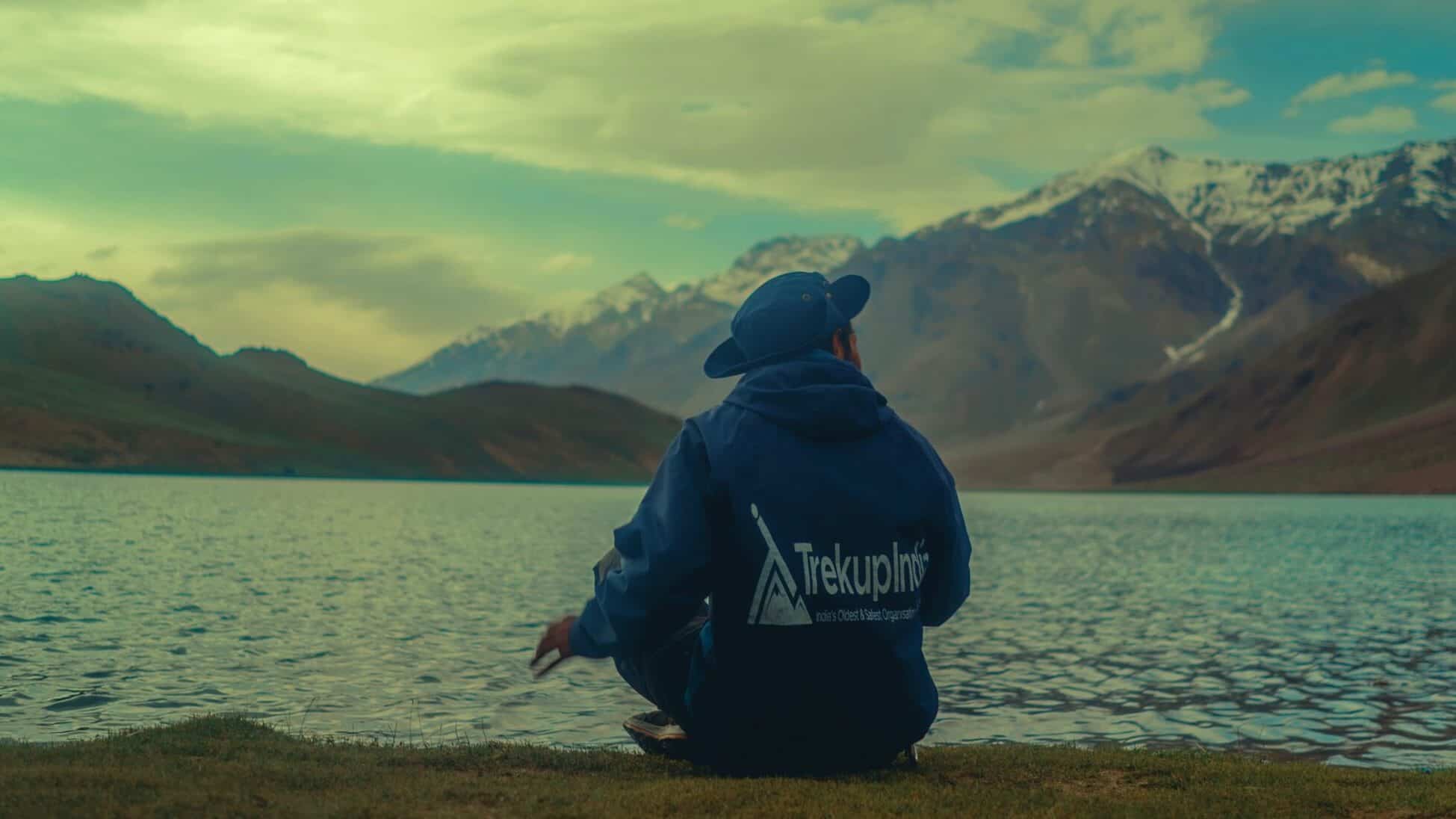Trek Grade
Moderate to Difficult
Highest Altitude
13,335 ft
Base Camp
Chandimarh
Best Time
July, Aug to Mid Sept
Trek Distance
48 Km
Pir Panjal Lakes Trek
Embark on the Pir Panjal Lakes Trek, a remarkable journey that guides you through a moderate trek across the breathtaking scenery and crystal-clear lakes nestled in the Pir Panjal mountain range of the Himalayas. Embark on an incredible journey in Jammu and Kashmir that takes you through 10 stunning lakes and 4 lush meadows, offering endless breathtaking moments. Ideal for adventurers seeking a thrilling and demanding expedition in the Himalayas, Pir Panjal Lakes Trek begins in the scenic town of Srinagar. Traverse through dense woodlands, delightful hamlets, and verdant pastures as the path gradually climbs, revealing awe-inspiring vistas of snow-covered summits, cascading waterfalls, and vibrant mountain blooms.
The Pir Panjal Lakes Trek journey spans over eight days and leads you through stunning spots in the Pir Panjal range. Along the way, you will encounter numerous high-altitude lakes, each one more breathtaking than the previous. Notable lakes on the route include Tarsar Lake, Marsar Lake, and Sundarsar Lake, all nestled amidst snow-covered peaks and providing awe-inspiring vistas.
During the journey, you can experience the local way of life and engage with welcoming villagers. You will also have the chance to enjoy tasty regional dishes that are specific to the area. Trying the local food is highly recommended, with options such as Kahwa, a traditional tea from Kashmir, and Rogan Josh, a popular Kashmiri lamb dish.
The Pir Panjal Lakes Trek journey is a delightful destination for those who appreciate nature and animals. The area boasts diverse plants and animals, such as different types of birds and creatures and unique Himalayan plants. While on the trek, you might encounter wildlife such as the Himalayan black bear, brown bear, musk deer, and snow leopard. Additionally, the region is a habitat for various bird species like the Himalayan monal, golden eagle, and bearded vulture.
The Pir Panjal Lakes trek is a challenging trek that demands good physical fitness and endurance. While much of the trek passes through vast open meadows in the Himalayas, some steep inclines and declines require careful attention and significant effort to traverse. Additionally, reaching certain lakes necessitates climbing high mountain passes and negotiating sections with large boulders. You’ll sometimes have to cross rivers or streams, adding to the difficulty. The initial ascent through the vibrant green forest on the first day includes several steep portions. Each day’s walking distance is limited to 8-10 km, but the trek involves continuous uphill and downhill sections that can be pretty tiring. Nonetheless, every day presents its stunning scenery, and the breathtaking Himalayan views are sure to rejuvenate you.
The best time for the Pir Panjal Lakes trek is typically from June to September when the weather is usually pleasant. During early June and early September, you can enjoy the sight of beautiful flowers blooming in the meadows. However, in recent times, the unpredictability of snowfall and rainfall has impacted the blooming cycle of flowers to some degree. By late September, the weather may turn cold and windy, with a possibility of light snowfall, which could impact the trek. Another option is to explore in early October if the weather conditions allow for it.
The trek to Pir Panjal Lakes commences from a tiny village called Chandimarh, which is situated 125 kilometres away from Srinagar, the principal city of Kashmir. A shared cab can be taken from Srinagar to reach Chandimarh (not Chandigarh), the starting point of the trek. Srinagar can be accessed by either flight or train from various major cities in India.
Explore the natural beauty of Jammu and Kashmir with a journey through 10 lakes and 4 meadows.
Trek Cost
- Stay will be on a twin-sharing basis in tents
- + 280 Trek Insurance (Mandatory)
- Transport Optional ( INR - 2,400 extra )
Pickup time 12 P.M from TRC Taxi Stand, Srinagar, in front of Tourism Office Building
Fix Diparture Dates
Pir Panjal Lakes Trek Videos
Videos by experts watch these videos to prepare well for a Successful Trek

Want To Trek Like Pro?
Basically, watch these videos if you want to trek the same way professional trekkers do and make your skills better. These videos contain useful tips and techniques to further improve your trekking skills itself. These videos actually help both new and experienced trekkers improve their trekking skills. These videos definitely provide useful tips that make your trek better. We are seeing that these videos by Trekup India experts will only help you make your trekking skills better.
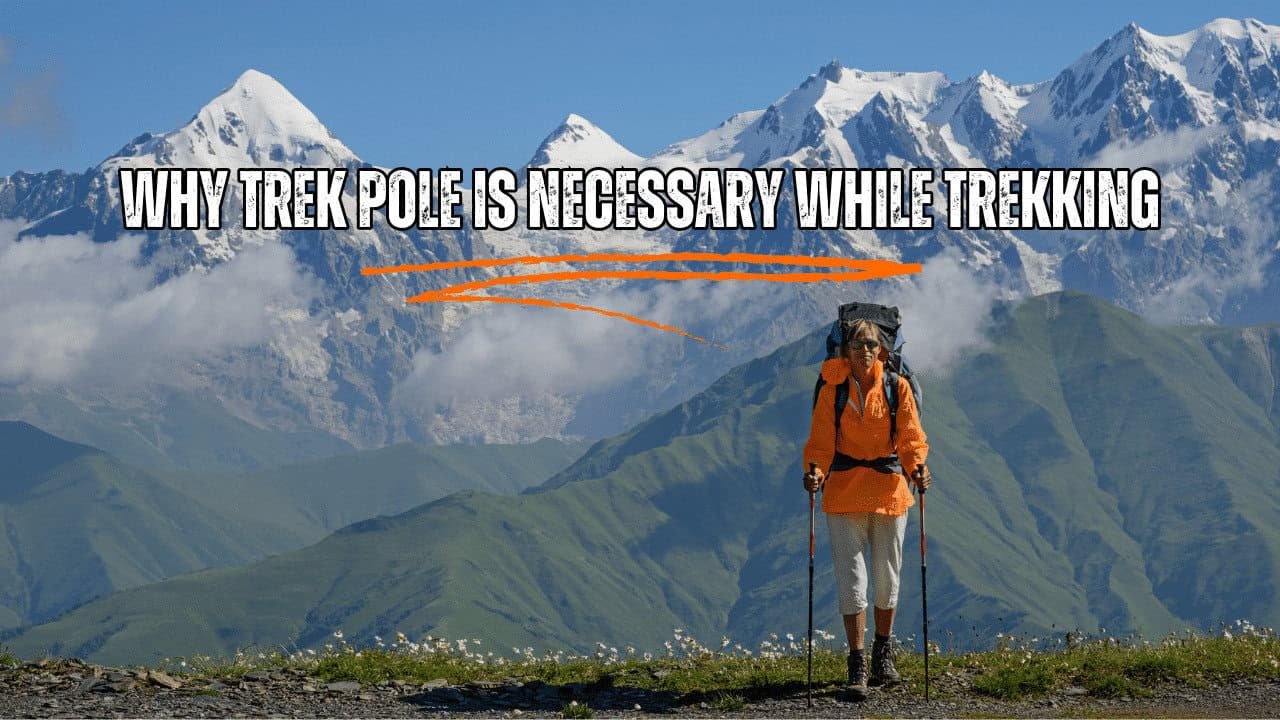
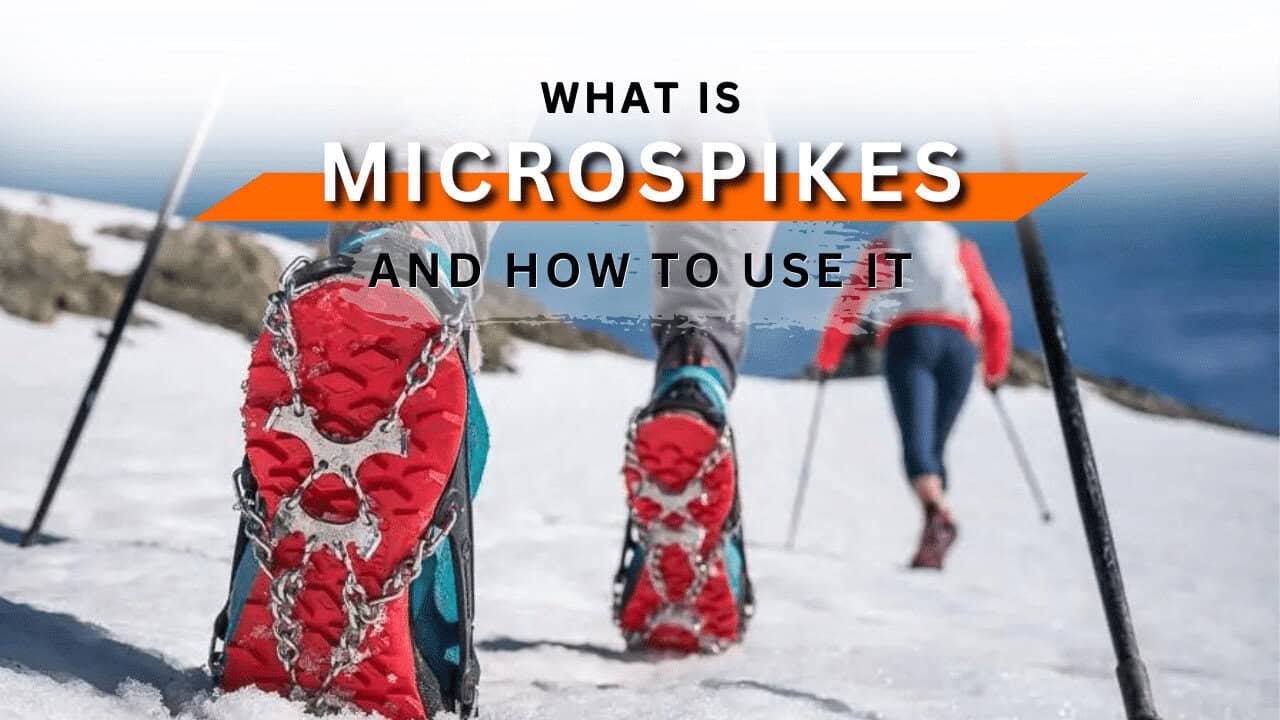
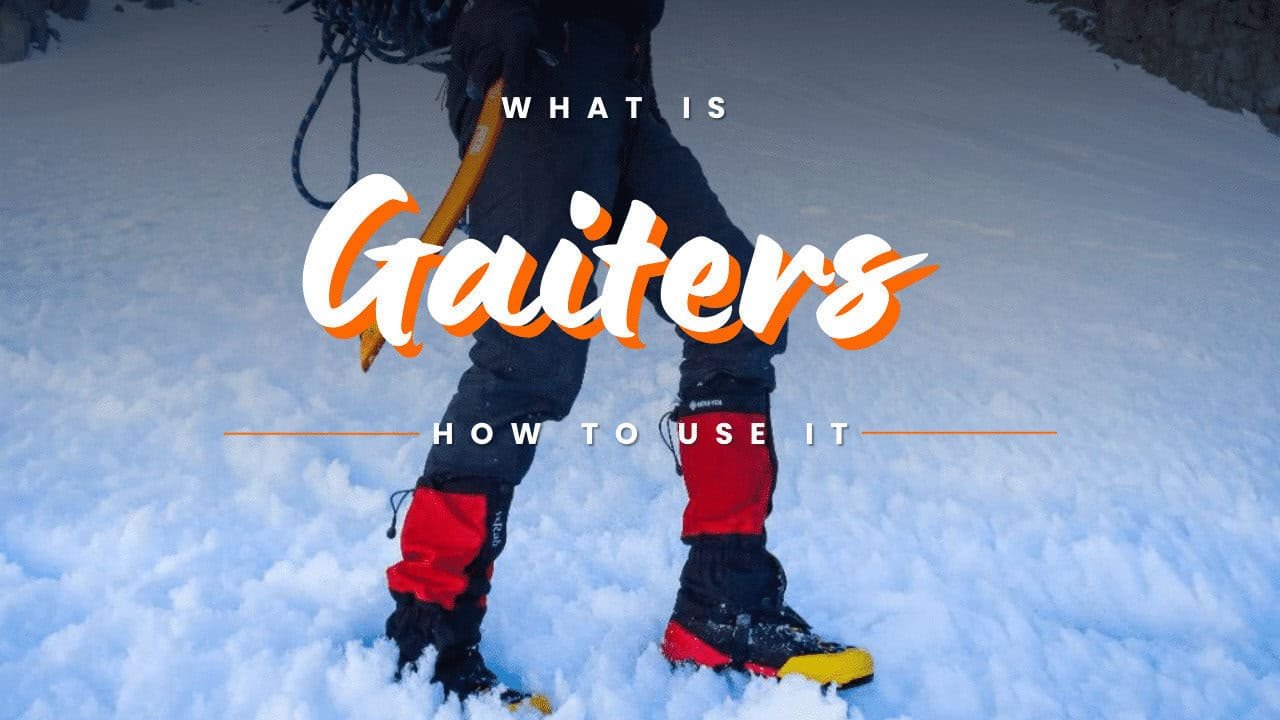
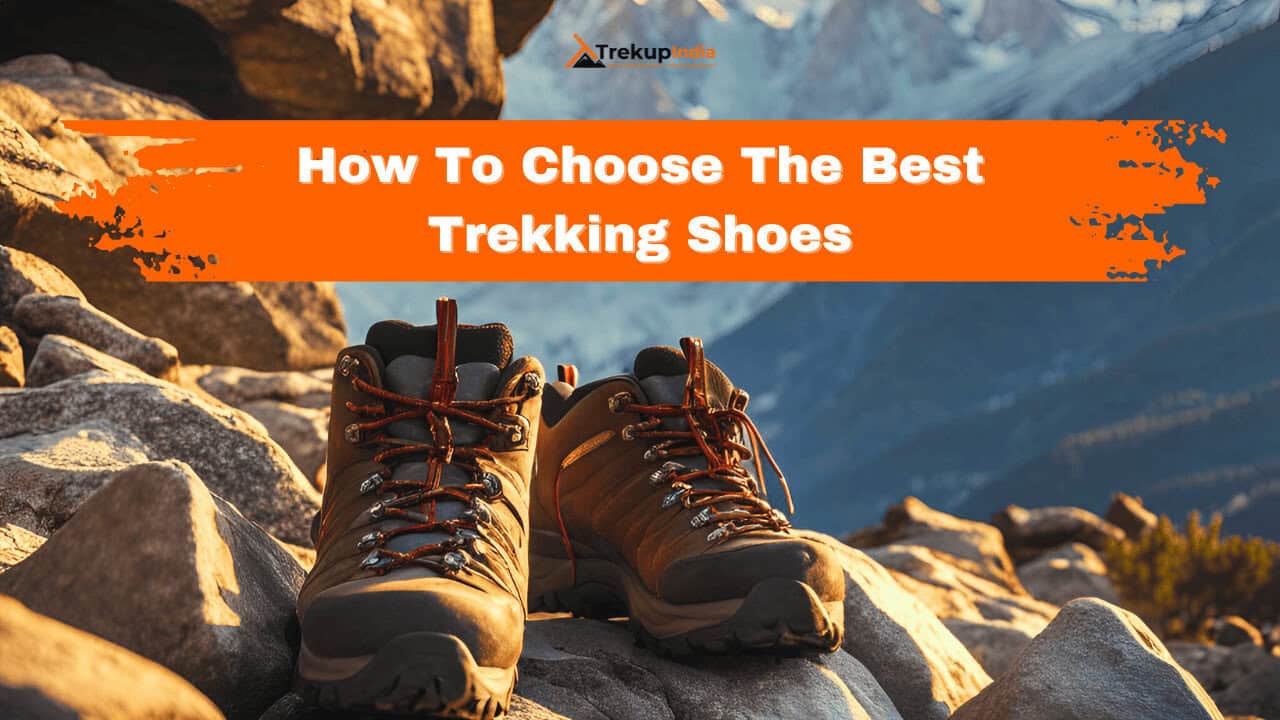

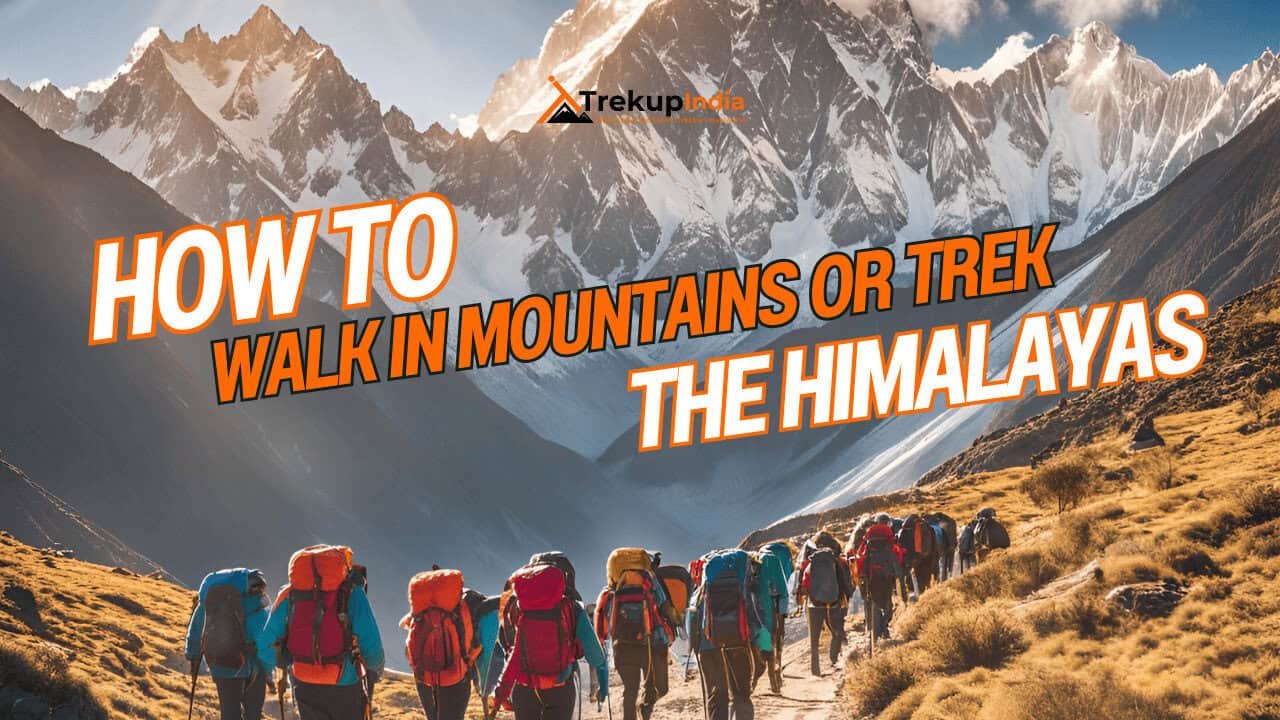

Know Everything About Acute Mountain Sickness
Acute Mountain Sickness occurs when people trek to high altitudes above 8,000 feet. This condition itself develops further due to reduced oxygen levels at such heights. Basically, as you go higher up, the air pressure and oxygen levels decrease, which causes the same problem. Acute Mountain Sickness surely causes headache, nausea, vomiting, and dizziness in affected persons. Moreover, peoples also experience difficulty in sleeping during this condition. To avoid mountain sickness, you should actually trek up slowly to higher altitudes. To learn further about this condition itself, watch the videos by Trekup India.
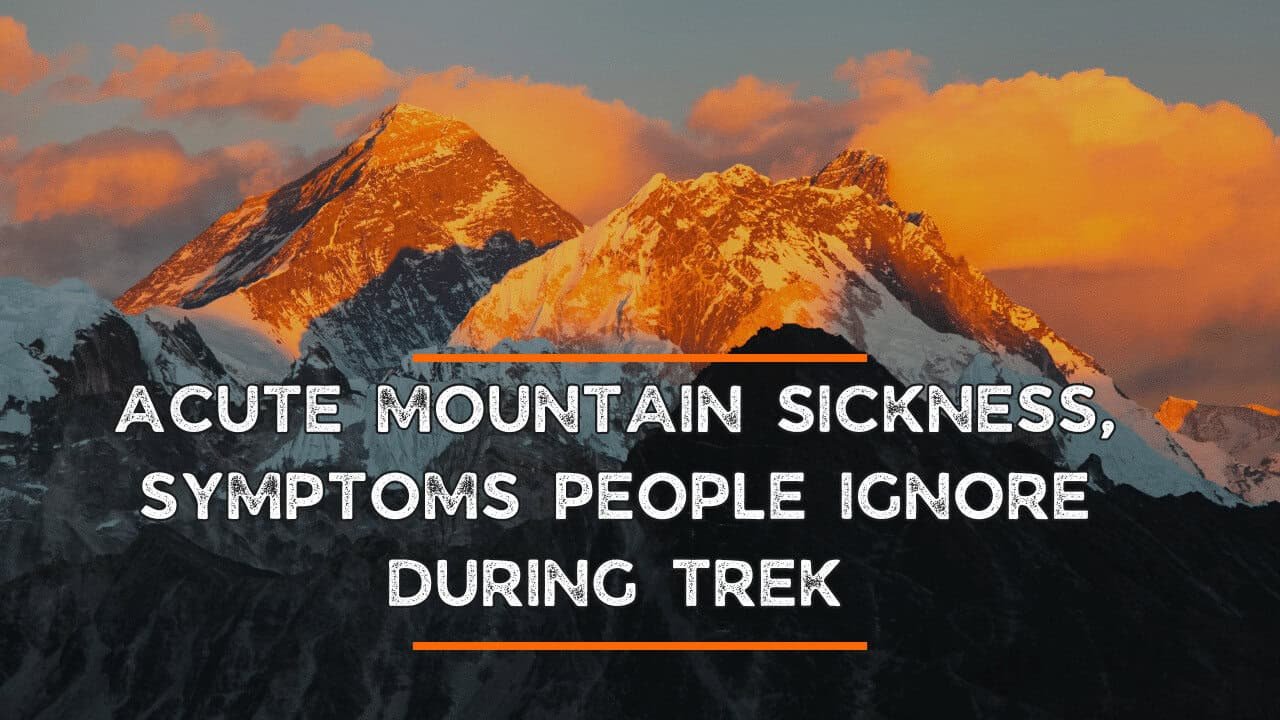
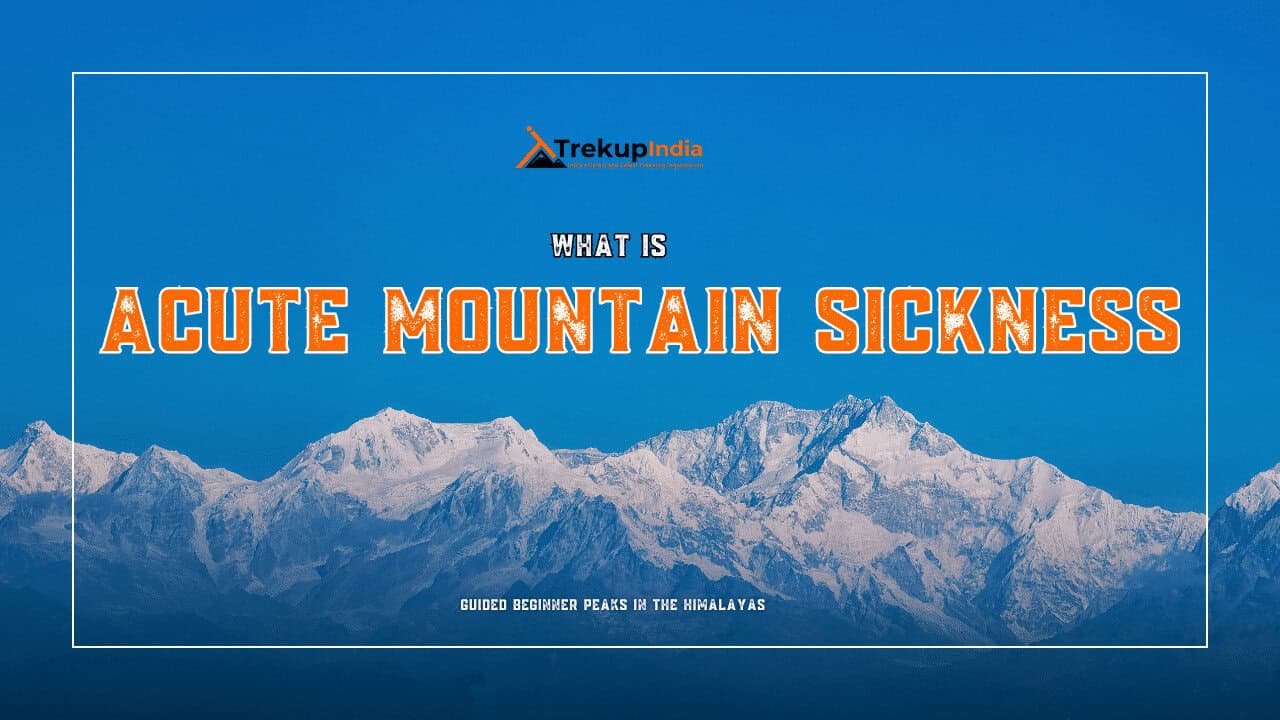
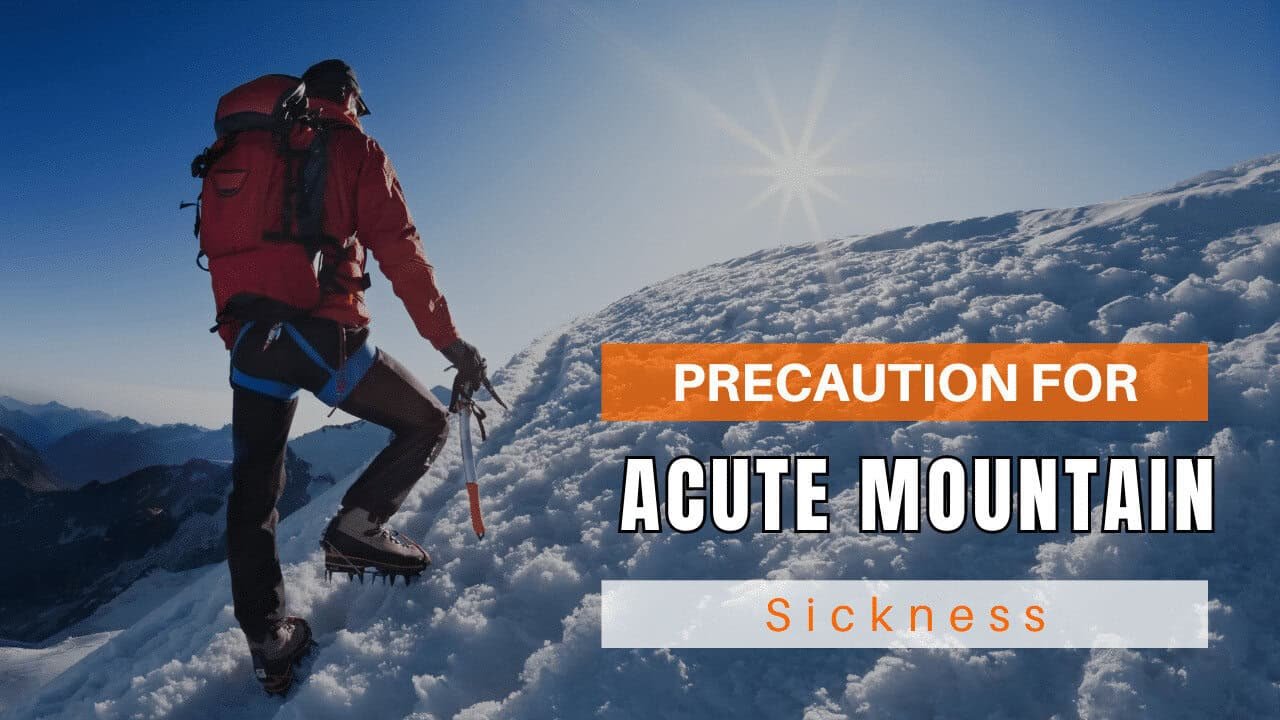
Day Wise Detailed Itinerary of Pir Panjal Lakes Trek
Day 1: Drive from Srinagar to Chandimarh.
- Travel distance: 130 kms
- Travel Time: approx. 3 – 4 hours
- Pick up Location: TRC Taxi Stand, Srinagar, in front of the Tourism Office Building; Pickup Time will be 9.00 AM.
- Chandimarh Altitude: 5,985 feet
- Lunch on the way (not included with trek fee)
On Day 1 of your journey, you will be driving from Srinagar to Chandimarh, which promises to be an incredibly scenic and memorable experience. The route will take you through the famous Mughal road, offering stunning views of the majestic Pir Panjal range that will leave you spellbound.
Along the way, you will have the opportunity to stop at Peer Bhaba, a charming village with a rich cultural heritage and a vibrant local community. It is advisable to keep your ID card handy, as you will need it for an upcoming army checkpoint.
Once you reach Chandimarh, the first village on your route, you can take some time to explore the local market and sample some delicious local cuisine. After that, it is recommended that you check in at the Tourism Lodge Guest House, where you will receive important safety procedures and instructions from the trek leader.
While you are in Chandimarh, you should not miss the chance to visit the Noori Chamb waterfall, which is a spectacular sight to behold. Alternatively, you can take a leisurely walk alongside the Chath Nalla stream, a serene spot perfect for relaxation and introspection.
Overall, Day 1 of your journey promises to be an unforgettable experience that will introduce you to this incredible region’s natural beauty and cultural richness.
Day 2: Trek from Chandimarh to Thera
- Trek distance from Chandimarh to Thera: 7.5 km
- Trekking time: approx 8 hours
- Thera Altitude: 9,355 feet
- Overnight stay in tents on
- twin sharing
- Meals: B/L/D
On the second day of your journey, you will start from the Tourism Lodge and make your way toward the Noori Chamb waterfall. As you gradually ascend towards the roadhead, you will pass by a 400-year-old Shiva temple on the way. To enter the forest section, you’ll need to take a small detour on your right through a gully. As you enter the mixed forest, which comprises fir, pine, and oak trees, you will experience the tranquility and beauty of nature.
After trekking for around 3 km, you will reach the Cheii village, where you can refill your water bottles and take a brief rest. The trail then becomes steeper, passing through a diverse forest area with varying vegetation. The forest area is home to various flora and fauna; you may spot some rare species if you’re lucky.
After traversing for another 2 km, you’ll reach the expansive Girjan meadows, one of the most extensive grasslands in the Poonch region. With their lush greenery and breathtaking views of the surrounding mountains, these meadows offer numerous opportunities for exploration.
As the sun sets, you’ll get to witness the awe-inspiring sight of clouds floating against the backdrop of the setting sun. The natural beauty and serenity of the Girjan meadows are truly breathtaking, and you’ll feel grateful to be able to witness such a sight.
Day 3: Trek from Thera to Khuan
- Trek distance from Thera to Khuan: 9 km
- Trekking time: approx 9 hours
- Khuan Altitude: 10,900 feet
- Overnight stay in tents on
- twin-sharing
- Meals: B/L/D
On the third day of your journey, you will embark on a scenic trek from Thera to Khuan, exploring the breathtaking Girjan meadows. As you climb higher, the landscape transforms, offering stunning and panoramic views that will take your breath away.
To begin your day, you will hike from the Thera campsite to the forest area, which is surrounded by tall and majestic pine and oak trees. As you continue, you will reach Bada Thera, an incredible vantage point that offers a 360-degree panorama of the Pir Panjal range. Here, you can take a moment to refill your water bottles and appreciate the beautiful surroundings.
Next, you will continue your zig-zag ascent to the summit, where you’ll be rewarded with a spectacular view of the forest, river, valley, Bada Tera, Dhok, and the previous campsite. After an hour of trekking, you will arrive at the charming meadows of Paindhari, which are located just 2 km away from the second campsite in Khuan.
The meadows of Paindhari are nestled in a valley, surrounded by towering mountains that create a natural amphitheater. This beautiful and serene landscape offers a peaceful atmosphere, allowing you to connect with nature and enjoy the moment. With its stunning natural beauty and breathtaking views, the Thera to Khuan trek is an experience you won’t forget.
Day 4: Trek from Khuan to Neelsar
- Trek distance from Khuan to Neelsar: 6 km
- Trekking time: approx 6 hours
- Neelsar Altitude: 12,175 feet
- Overnight stay in tents on
- twin-sharing
- Meals: B/L/D
On the fourth day of your trek, you’ll embark on a thrilling adventure from Khuan to Neelsar, eagerly anticipating your first glimpse of the stunning alpine lake. Your journey will begin with a strenuous climb from the Khuan campsite, following a winding path that leads you to the entrance of the col. As you ascend, you’ll be surrounded by a lush forest, teeming with wildlife and the sounds of nature. You’ll come across a small, glistening stream that you’ll need to cross, followed by a series of rocky terrain that you’ll need to navigate through.
As you continue your ascent, you’ll reach the summit in just an hour, where the breathtaking meadows of Byad’ll greet you. Here, you’ll witness a beautiful landscape, with lush green grass and a variety of flowers in full bloom, providing a picturesque backdrop for your journey to the lake of Neelsar.
With the rest of the day at your disposal, you’ll have ample time to explore the surrounding lakes of Neelsar II, III, Dingsar, and Gumsar, each one offering a unique and unforgettable experience. You can take a dip in the lake’s cool waters, go for a refreshing swim, or relax on the banks and soak in the serene surroundings. You can also go for a hike around the lake, taking in the stunning views of the snow-capped mountains in the distance.
Overall, the Khuan to Neelsar trek is an adventure of a lifetime, offering a perfect blend of adventure, nature, and relaxation.
Day 5: Trek from Neelsar to Chandansar
- Trek distance from Neelsar to Chandansar: 7 km
- Trekking time: approx 9 hours
- Chandansar Altitude: 12,920 feet
- Overnight stay in tents on
- twin-sharing
- Meals: B/L/D
On the fifth day of your journey, you will embark on a thrilling trek from Neelsar to Chandansar. Get ready for an exhilarating journey featuring a challenging climb to the Kaldachni Pass, where you will be rewarded with breathtaking panoramic views from the summit. The mesmerizing sight of the surrounding mountains and valleys will leave you awestruck.
As you descend from the pass towards the lake of Kaldachni, prepare to be amazed by the stunning sight of Nandansar. The glade’s unique landscape, surrounded by towering mountains, creates a truly enchanting atmosphere that you won’t soon forget.
The trail will then lead you on a 3 km ascent towards the lake of Chandansar, where you will find a refreshing water source to quench your thirst. This is an ideal location to set up camp and take in the serene beauty of your surroundings. The lake’s clear waters and picturesque surroundings are sure to leave you feeling refreshed and energized, ready for the next leg of your journey.
Day 6: Via Handusar Trek from Chandansar to Nandansar
- Trek distance from Chandansar to Nandansar: 9 km
- Trekking time: approx 8 hours
- Nandansar Altitude: 12,310 feet
- Overnight stay in tents on
- twin-sharing
- Meals: B/L/D
On the sixth day of your trek, you will embark on a challenging trek from Chandansar to Nandansar via Handusar. The highlight of this day is ascending to the Khabi ki Gali pass, which is situated at an elevation of 4,200 meters above sea level. The trek to the pass is arduous and may prove difficult due to boulders and loose rocks on the trail. However, the stunning panoramic view of Laksukhsar, a lake resembling the number 8, from the pass is definitely worth the effort.
If time permits, you can also visit Handusar, a beautiful meadow near the pass, and other nearby lakes, such as Gangbal and Kolsar. These lakes are perfect spots for a refreshing dip or a quick picnic.
After exploring the area, you will then descend towards Nandansar, where you can spend the night camping under the starry sky. The campsite offers a magnificent view of the Milky Way, making it an ideal spot for stargazing enthusiasts. You can also spend some time relaxing at Nandansar Lake, a serene body of water that reflects the surrounding Himalayan peaks.
Overall, this day promises to be a thrilling and fulfilling experience for any trekking enthusiast, as it offers a chance to explore some of the most picturesque landscapes in the Himalayas.
Day 7: Trek from Nandansar to Peer Ki Gali. Drive to Srinagar
- Trek distance from Chandansar to Nandansar: 9.5 km
- Trekking time: approx 7 hours
- Peer Ki Gali Altitude: 11,445 feet
- Meals: B/L
- Driving road distance: 125 km
- Drive time: 3-4 hours
On your trek’s seventh and final day, you will journey from Nandansar to Peer Ki Gali before driving to Srinagar. The climb from the camping area to the pass is quite challenging, as you will have to advance by 1,135 feet and cover a total distance of 2.7 km. However, the stunning views of the surrounding landscapes and the fresh mountain air will make the journey worthwhile.
As you trek along the trail, you will encounter Kalasar Lake about halfway through. The turquoise waters of the lake, surrounded by the snow-capped mountains, make for a breathtaking sight. You can take a break here and enjoy the serenity of the place before continuing your journey.
As you approach the pass, the trail becomes steeper and more challenging, but it remains manageable with some effort. Once you reach the pass, you will be rewarded with panoramic views of the Himalayas that will take your breath away. You will then descend to Peer Ki Gali through meadows and certain sections along the mountainside. The descent is relatively easier and less challenging than the climb.
Your anticipated arrival time in Srinagar is 8 p.m., so it is advisable to plan your travel accordingly. To allow yourself some time to rest and rejuvenate, schedule a flight for the next day, preferably in the afternoon. Overall, the trek is a memorable journey that will leave you with lasting impressions of the natural beauty of the Himalayas.
Pir Panjal Lakes Trek Route Map
We’ve prepared a comprehensive Trek Route Map for your upcoming adventure to Pir Panjal Lakes Trek, which outlines the entire journey including all stops and trails. This map provides detailed information on the terrain, distance between points of interest, and estimated travel time to help ensure a safe and enjoyable trek. We’ve carefully curated the map to ensure that you have all the necessary information at your fingertips. Please take a moment to review it thoroughly, and don’t hesitate to reach out if you have any questions or concerns.
Pir Panjal Lakes Trek Altitude Chart
The Trek Altitude Chart is a useful tool for Trekkers to monitor their altitude changes during their rides, allowing them to plan their routes more efficiently and track their progress over time. This Pir Panjal Lakes Trek chart is beneficial for both casual and experienced Trekkers, helping them make the most out of their Trek experience.
Trek Cost Inclusions
- Stay 5 Nights in tented accommodation at respective campsites of Trekup India on a twin sharing and 1 night in guest house.
- Meals: Trekup India provided cooked meals during the trek starting with Dinner on Day 01 to Lunch on day 07 (Meals are simple, nutritious and vegetarian and non-repeated meals)
- Transport Optional: Srinagar to Chandimarh on sharing jeeps and upon returning Jeep from Peer Ki Gali to Srinagar. It will cost around 1000 -1200 one way.
- Trek Insurance (Optional): Trekup India recommends that all trekkers consider getting trek insurance. This is optional, but highly recommended. Trek insurance covers unexpected events that may occur during your trek. The cost of the insurance starts from INR 210. Please read more about what is included in the coverage and why it is mandatory on treks.
- Trek Equipment: Sleeping bag, Sleeping tents, Kitchen tent, Dining tent, Toilet Tent.
- Amenities: All utensils, sleeping mattresses (Black foam mats), Crampons, and Gaiters for snow.
- Health & Safety: First Aid Box, Oxygen Cylinders, Stretchers, Oxi meters, BP Machines, health.
- Permits: Forest Permits and Camping Permission Fee
- Trek Crew: High Altitude Chef, Helpers, Trek Leader & Guides, and other support teams.
- Potters & Mules: Potters and Mules are to carry all trekking equipment, ration, and vegetables.
Trek Cost Exclusions
- GST 5% (it is Mandatory)
- Any Meals/accommodation beside the itinerary or not mentioned in the program.
- Any Bus / Airfare to/from trek start/end point
- Personal Medical expenses do carry your medication.
- Any personal services such as Laundry, phone calls, liquors, mineral water, etc.
- Any still / video camera fee
- Any Entrance fee Monuments, Monasteries, Museums, Temples – Pay directly on the spot.
- Mules or porter charges to carry private baggage (Offload Charges for bag 365 per day, per bag if paid online (at base camp 2,550). Note: Bag weight should not be more than 10 kg.
- Any emergency evacuation charges
- Any services that are not mentioned in the cost inclusion section.
What should you pack for the Pir Panjal Lakes Trek
Pir Panjal Lakes Trek is a high-altitude trek. The trekking gear you have to have for this particular trek differs from normal treks. Thus, read this whole segment. There is an important question that the trekker who is doing trek asks, like what all things to carry while trekking. Below, we have provided the details on everything you should take; an easy way to remember is by Head to foot or foot to head. We have prepared from Head to foot.
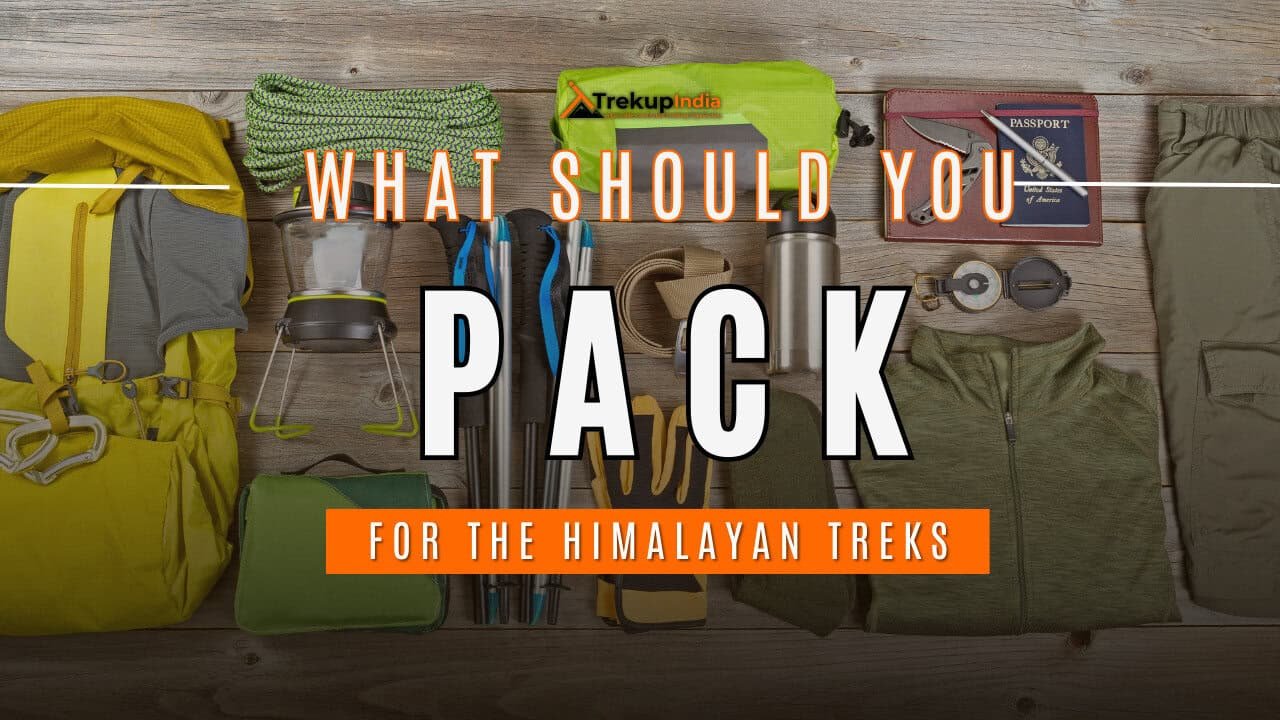
Head Gears
When trekking it's important to carry headgear to protect your head and face.
Heading out for a trek? Don’t forget to carry headgear to protect your beautiful face and head from the sun, wind, and dust! It’s an essential accessory that keeps you safe and comfortable throughout your adventurous journey. So, make sure you pack it before you step out into nature!
- Head Lamps – When trekking at night, headlamps are essential to illuminate your path while keeping your hands free. Headlamps come in different sizes and lumens, so it is essential to choose one that suits your needs.
- Hats or Cap – Caps or hats are also necessary when trekking in different weather conditions. Caps protect your head from the wind and freezing temperatures at night, while hats provide shade and protection from the sun during the day. It’s essential to ensure that your hat has a strap to prevent it from being blown away by the wind.
- Sunglasses – Sunglasses are also essential for trekking. Your sunglasses should protect your eyes from harmful UV rays and fit your face perfectly to avoid falling off while climbing, jumping, or crossing obstacles. The glass of your sunglasses should also be designed for different weather conditions to provide optimal visibility.
- Buff / Balaclava – Lastly, a buff or balaclava is a must-have to protect your mouth or neck from extreme temperatures and keep them warm. Buffs and balaclavas come in different materials, thicknesses, and designs, so it’s important to choose one that suits your needs and preferences. Depending on the weather conditions and your activities, you can wear them as neck warmers, face masks, or headbands.
Clothes
When trekking in high altitudes, prepare for cold weather by wearing layers. Layering traps heat, keeps you warm, and allows you to easily adjust your clothing as temperatures fluctuate.
Layering is important for different seasons when trekking. When planning a high-altitude trek, it is important to prepare for the cold weather. Wearing layers is the best approach as it provides both protection and flexibility when the weather changes frequently in the mountains. Layering helps to trap heat and keep your body warm, while at the same time allowing you to easily adjust your clothing as the temperature fluctuates. By wearing layers, you can enjoy your trek comfortably and stay safe in the unpredictable mountain weather
- For spring, summer, and monsoon treks, consider wearing three layers: a woollen sweater, a fleece, and a padded jacket.
- For autumn treks, add one more fleece layer to make it four layers.
- For winter treks, you may need five layers with thermals, a woollen sweater, two fleeces, and a padded jacket.
- T-shirt/sleeve shirt– Bring three T-shirts and two quick-dry trek pants, wearing one and carrying the others. Long sleeve shirts help to protect from sun UV rays. We recommend synthetic T-shirts as they get dry quickly when they get wet.
- Hiking / Trekking Jacket– down jackets (-5 to-10 C) or two-three-layer jackets.
- Thermals– at least two pairs of thermals help keep the body warm during cold weather.
- Undergarments– you can carry them according to your habitual and hygiene requirements.
- Gloves– 1 pair of gloves will keep your hand warm and nice.
- Trek Pants– Bring 2 to 3 comfortable trekking pants. Trekking pants play a significant role, as they are designed for comfort and mobility, making trekking easier. It should be Synthetic so that it gets dry quickly when wet.
- Rain Wear– you can carry a raincoat or Poncho. During long rains and snowfalls, the waterproof jackets start leaking. Still, the Poncho and raincoats keep you dry, so choose accordingly.
Tip: If you choose a raincoat on your trek, carry a small waterproof cover so things inside your backpack can’t get wet. If you carry a Poncho, you don’t need to worry. It protects both you and your backpack.
Foot Gears
When it comes to planning a trek, one of the most important aspects is to ensure that you have the right kind of foot gear.
- Trekking shoes which are waterproof and have ankle support. Walking / Hiking sandals which can be used off the trek, i.e., in the morning and evening hours when you reach the campsite, basically to get your feet rest from heavy boots, sometimes used for crossing streams and rivers, it’s more comfortable and safer than crossing barefoot or wetting your shoes. Sneakers (Optional) can be worn for normal driving days or used around the camp.
- Socks– you should at least carry 3 to 4 pairs.
- Microspikes & Gaitorswill be provided by Trekup India when required. You don’t have to carry them.
Personal First Aid Kit
Don't forget to pack your personal first aid kit! It's always better to be safe. So, make sure you're prepared for any unforeseen circumstances.
Below are some common medicines generally required/used during your adventure trip; however, please consult your doctors prior.
- Antiseptic towel or water syringe (to clean the wound)
- Butterfly bandage for a small cut
- Cotton and elastic bandages and sterile gauze pad for larger wounds
- Latex gloves are used when the wound bleeds.
- Medicine for Diarrhea (Upset stomach)
- Medicine for cold, flue/fever, headache
- Some pain killers
- ORS pouches
- Quick pain relief spray (External use)
- Any personal medicine prescribed by your doctor
- Dimox / Similar for high altitude sickness
- Bug Repellent
- Carry some nutria/energy bars and drinks (non-alcoholic)
- Note: Kindly consult your doctor before purchasing or taking any medicine.
Gadgets and Other Items
You might also consider bringing a camera, binoculars, portable charger, and snacks. Be well-prepared and tackle any trail with confidence.
- Trekking Poles
- Mobile phone
- Camera
- Spare batteries for phone and camera, power bank
- Lightweight flashlight or headlight
- A waterproof bag made of plastic is used for the camera.
- Plug/converter for electrical items
- 1-litre water bottle
- A journal with a pen would be a good idea to keep your notes.
- Some book of your interest for the ideal time
- Get into the habit of maintaining a Map and guidebook of the region.
Hygiene & Personal toiletry
Remember to pack hygiene and personal toiletry items such as soap, shampoo, toothbrush, toothpaste, deodorant, and toilet paper.
- Sunscreen with UV protection to shield your skin from harmful rays
- 1 or 2 small quick-drying towels to help you dry off quickly in case of rain or sweat
- Toilet paper, tissues or wet wipes for maintaining hygiene while on the trek
- Toothbrush, toothpaste, and mouth freshener to keep your mouth clean and fresh throughout the journey
- Deodorant or talcum powder to help you stay fresh and odor-free, especially during hot and humid climates
- Shampoo to keep your hair clean and healthy
- Sanitary pads or tampons (for female trekkers) to manage menstrual cycles
- Lip-gloss or salve to protect your lips from dryness and chapping
- Bio-degradable soap to keep yourself clean and hygienic while on the trek
- Nail clipper and other personal items that you use daily
Compulsory Documents to Carry
There are certain documents that you should always carry with you. These documents are not only necessary for your safety and security, but they may also be required by local authorities.
These files must be submitted to the Forest Department before your trek. With none of these, you will not be permitted to trek—original and photocopy of government photo identity card. Carry IDs like Aadhaar, voter ID, etc.
How To Plan Your Trek & Reach Srinagar
By Air:- Most air carriers such as Indian Airlines (www. Indian airlines.nic.in) Jet Airways (www.jetairways.com ) have regular flights to Srinagar. Getting to Srinagar by flight from New Delhi is considered the most conceivable.
By Train:- Jammu may be the closest railway station to Srinagar, which is at a distance of 290 km. Jammu railway station is nicely attached to other main towns in India by rail. Direct Rails are available from Delhi, Trivandrum, Bangalore and also Chennai.
By Bus:-Srinagar is connected through the National Highway 1A to all over the country. J & K transportation has regular comfy buses from Jammu. The Journey captures approximately ten hrs to arrive at Srinagar.
Fitness Required & Preparation Guide For Pir Panjal Lakes Trek
If you’re preparing for a Pir Panjal Lakes Trek, Trekup India recommends jogging as part of your fitness routine. Jogging helps work out the same muscle groups that you’ll use during trekking and can help you build endurance. You don’t need any special equipment to get started.
Fitness Target
Trekup India has put the Pir Panjal Lakes Trek into an moderate to difficult grade-level trek.
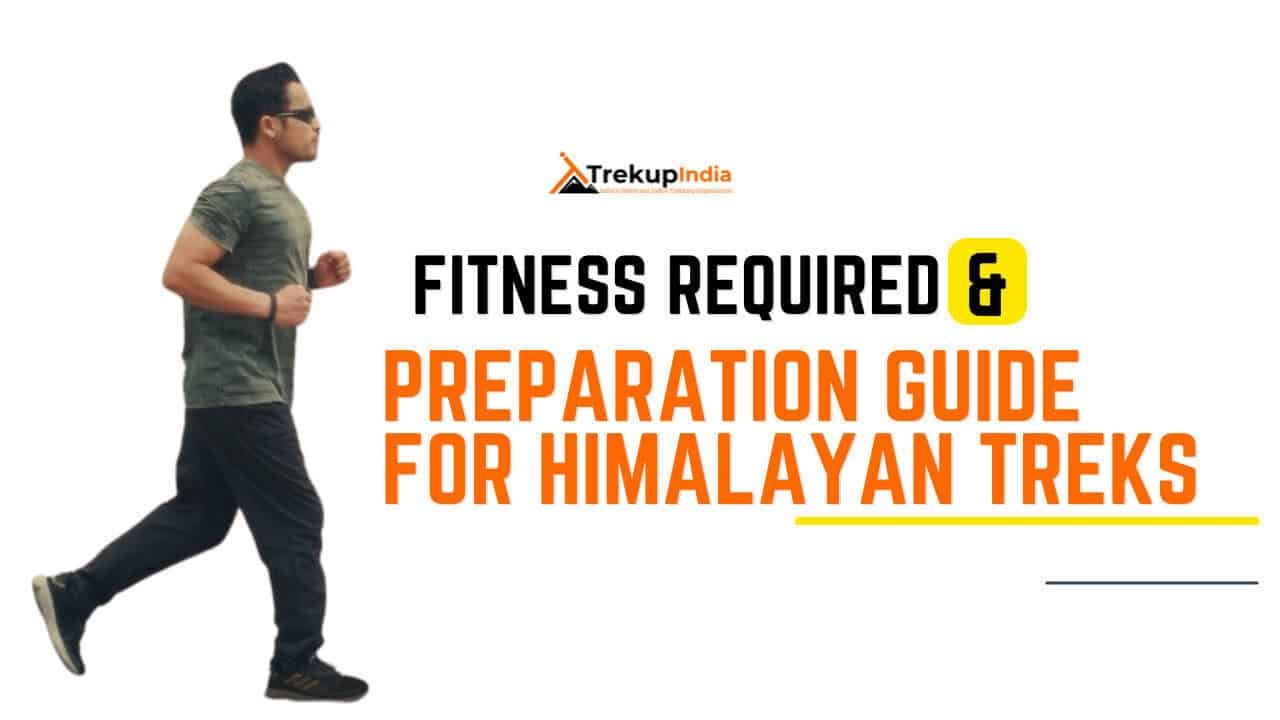
For Moderate – Difficult Treks – In order to be well-prepared for your upcoming trek, it is recommended that you focus on building your endurance by aiming to cover a distance of 4.5 kilometers in less than 40 minutes. This will help you to develop the necessary stamina and strength required to successfully complete your journey.
How to Achieve This Fitness Target?
To start preparing for your trek:
- Try jogging for at least five days every week.
- If you find 5 km too difficult at first, begin with 2 km and gradually increase over 2-3 weeks.
- Once you feel more comfortable running 5 km, focus on improving your speed gradually on a daily basis.
It is important to ensure that you can consistently complete 4.5 km in under 40 minutes for at least two weeks before your planned trek. Allow yourself 6-8 weeks to prepare physically for the journey.
Strength Training exercises that benefit Trekking
Trekking is an activity that demands a good level of strength.
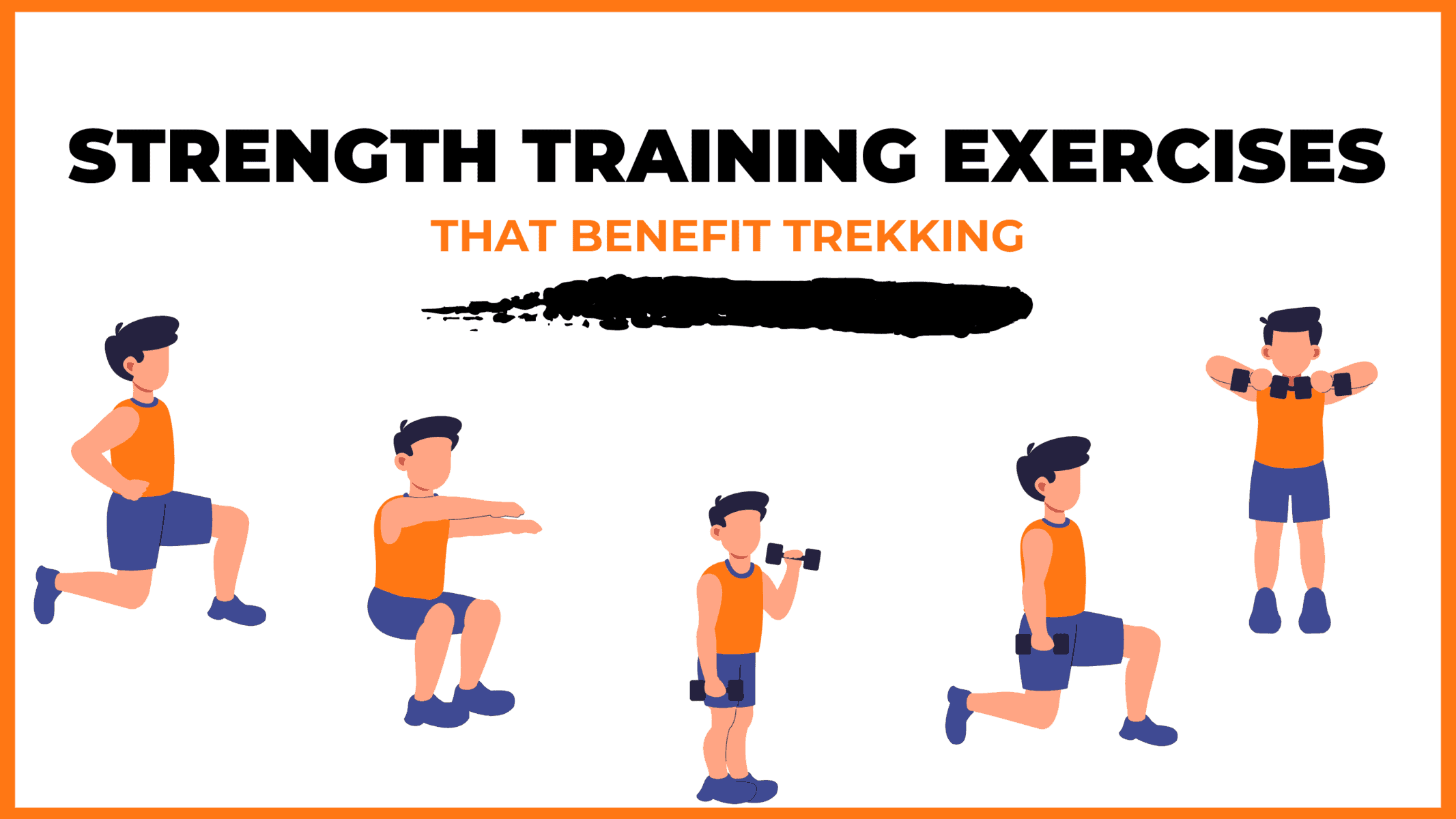
Trekking is a demanding activity that requires good cardiovascular endurance, muscular strength, and overall fitness. To help you prepare for your trek, incorporating bodyweight exercises into your training routine can be an effective way to build strength, improve stability, and enhance endurance, all of which are crucial for a successful trek. In this regard, here’s a breakdown of body weight exercises categorized by the specific body parts they target and the benefits they offer during trekking.
1. Lower Body Exercises
Lower body exercises like squats and lunges are great for building lower body strength, essential for trekking.
a. Squats
Squats are an excellent exercise for building lower body strength, essential for trekking. They target the quadriceps, hamstrings, glutes, and calves. Solid quadriceps and glutes provide power for ascending and tackling uphill climbs, while vital hamstrings aid stability during descents. This is particularly helpful in navigating uneven terrain during trekking.
How to perform Squats Exercises:
- Stand with feet shoulder-width apart, toes pointing slightly outward.
- Lower your body by bending your knees and hips, keeping your back straight.
- Lower until your thighs are parallel to the ground or as low as comfortable.
- Push through your heels to return to the starting position.
b. Lunges
Lunges target the quadriceps, hamstrings, glutes, and calves. They improve lower body strength, balance, and stability, crucial for maintaining control on rocky trails and steep slopes. Additionally, they enhance flexibility, reducing the risk of injury while trekking.
How to Perform Lunge Exercises:
- Stand with feet hip-width apart, hands on hips or sides.
- Take a step forward with one foot, lowering your body until both knees are bent at 90-degree angles.
- Push through the heel of your front foot to return to the starting position.
- Repeat on the other side, alternating legs.
2. Upper Body Exercises
Upper body exercises such as push-ups and pull-ups effectively strengthen the upper body, especially the chest and shoulders, which are essential for carrying a backpack during treks.
a. Push-Ups
Targets: Chest, shoulders, triceps, and core.
Benefits for Trekking: Push-ups are an effective exercise to strengthen the upper body, especially the chest and shoulders, essential for carrying a backpack during treks. Improved upper body strength will also help maintain posture and stability while traversing challenging terrain.
How to Perform Push-Ups Exercises:
- Start in a plank position with hands shoulder-width apart and body in a straight line from head to heels.
- Lower your body by bending your elbows until your chest nearly touches the ground.
- Push through your palms to return to the starting position.
- Keep your core engaged throughout the movement.
b. Pull-Ups/Bodyweight Rows:
Targeting the back, biceps, and shoulders can significantly benefit trekking. You can strengthen these muscle groups by performing pull-ups or bodyweight rows and improve your posture and balance while carrying a backpack. Additionally, more muscular back muscles can help reduce the risk of back strain and fatigue during long treks, making your journey safer and more comfortable.
3. Core Exercises
Core exercises like planks and Russian twists can help strengthen the core muscles, which are crucial for maintaining stability and balance while trekking on uneven terrain.
a. Planks
Targets: Abdominals, obliques, and lower back.
Benefits for Trekking: Planks are an effective exercise that helps strengthen the core muscles. These muscles are crucial for maintaining stability and balance while trekking on uneven terrain. A strong core also helps improve posture, reducing the risk of back pain and fatigue during extended hikes.
How to Perform Planks Exercises:
- Start in a plank position with elbows directly under shoulders and body in a straight line from head to heels.
- Engage your core and hold the position, avoiding sagging or arching the back.
- Keep breathing steadily and hold for the desired duration.
b. Russian Twists
Targets: Obliques, abdominals, and lower back.
Benefits for Trekking: Russian twists engage the core muscles, particularly the obliques, improving rotational stability and balance. Enhanced core strength helps prevent injuries and improves overall performance during trekking.
How to Perform Russian Twist Exercises:
- Sit on the ground with knees bent and feet flat, leaning back slightly to engage the core.
- Clasp hands together and twist the torso to one side, bringing the hands towards the ground beside the hip.
- Return to the centre, then twist to the other side.
- Continue alternating sides for the desired number of repetitions.
4. Full Body/Cardiovascular Exercises
Full-body/cardiovascular exercises like burpees and mountain climbers are excellent for improving cardiovascular endurance, strength, and agility.
a.Burpees
Burpees are an excellent full-body exercise that targets your legs, chest, arms, and core. This exercise dramatically benefits trekking enthusiasts, improving cardiovascular endurance, strength, and agility. Regularly incorporating burpees into your workout routine can enhance your overall fitness level, which can help you endure long hikes and rugged terrains with ease.
How to Perform Burpees Exercises:
- Start in a standing position.
- Squat down and place hands on the ground.
- Jump feet back into a plank position.
- Perform a push-up.
- Jump feet back to the squat position.
- Explosively jump up into the air, reaching overhead.
- Land softly and repeat the sequence.
b. Mountain Climbers
Mountain climbers target the core, shoulders, chest, and legs. This dynamic, full-body exercise can significantly improve cardiovascular endurance and agility. It is an excellent functional workout for trekking preparation as it engages both the upper and lower body muscles while strengthening the core muscles.
How to Perform Mountain Climbers Exercises:
- Start in a plank position with hands shoulder-width apart and body in a straight line from head to heels.
- Drive one knee towards the chest, then quickly switch legs, alternating in a running motion.
- Keep the core engaged and the hips stable throughout the movement.
- Continue at a moderate to fast pace for the desired duration.
Incorporating bodyweight exercises into your training routine can help you build strength and endurance and prepare your body for the physical demands of trekking. Consistency and proper form are crucial to maximizing the benefits of these exercises and ensuring a safe and enjoyable trekking experience. Engaging your core muscles, including obliques, abdominals, and lower back, with Russian twists can improve your rotational stability and balance, preventing injuries and enhancing overall performance during trekking.
When incorporating strength training exercises into your workout routine, it’s essential to maintain proper form and technique to avoid injury. Start with lighter weights and gradually increase the intensity as you progress, focusing on compound exercises targeting multiple muscle groups simultaneously. Some examples of practical strength training exercises for trekking include squats, lunges, deadlifts, and pull-ups.
Remember to give your muscles time to recover between workouts, and remember to stretch before and after your workouts to prevent injury and improve flexibility. Combining strength training with jogging and proper stretching allows you to take your fitness to the next level and confidently tackle even the most challenging treks.
Our Trekkers Reviews And Expreinces
Food Provided by Us During Trek
We provide only Indian vegetarian food, and your meal will mainly consist of Indian bread, vegetables, lentils, rice, and a delicious dessert. During your trek, we will serve three meals a day, including breakfast, lunch, and dinner. You will also be served tea, snacks, and lip-smacking soup in the evening before dinner. If it is a long day of trekking, you will be given a packed snack.
After extensive research on the trekkers’ nutritional requirements, we prepare the menu. Before putting all the meals together, we also consider the altitude and the weather.
The meal we serve during the trek is perfectly balanced with calories, carbohydrates, vitamins, protein, fibre, and minerals. You need to know that all our cooks have great expertise in cooking and have undergone thorough training. So, get ready to enjoy delectable and lip-smacking dishes during your trek. You will be served with lemon tea in the tent to start your day with a refreshed feeling. Before leaving the campsite for trekking, you will be given a hot finger-licking breakfast like upma, Aallu Prantha, Besan Chilla, Poha, Daliya, Corn flakes, and Maggie, along with tea or coffee.
If your trek is longer, we also offer some fresh local fruits such as apples and healthy drinks like Frootie or Maaza. In the afternoon, you will be served a simple & healthy lunch, while at around 04:00 pm, you will be given tea and a light evening breakfast. After you reach your campsite at night, you will be served a hot and delightful dinner.
After reading this, you must have understood the food we provided on the trek; you don’t need to worry about food. Many trekkers repeatedly trek with us because of the food we provide. Thus, we will give you unforgettable experiences.
Safety During Pir Panjal Lakes Trek
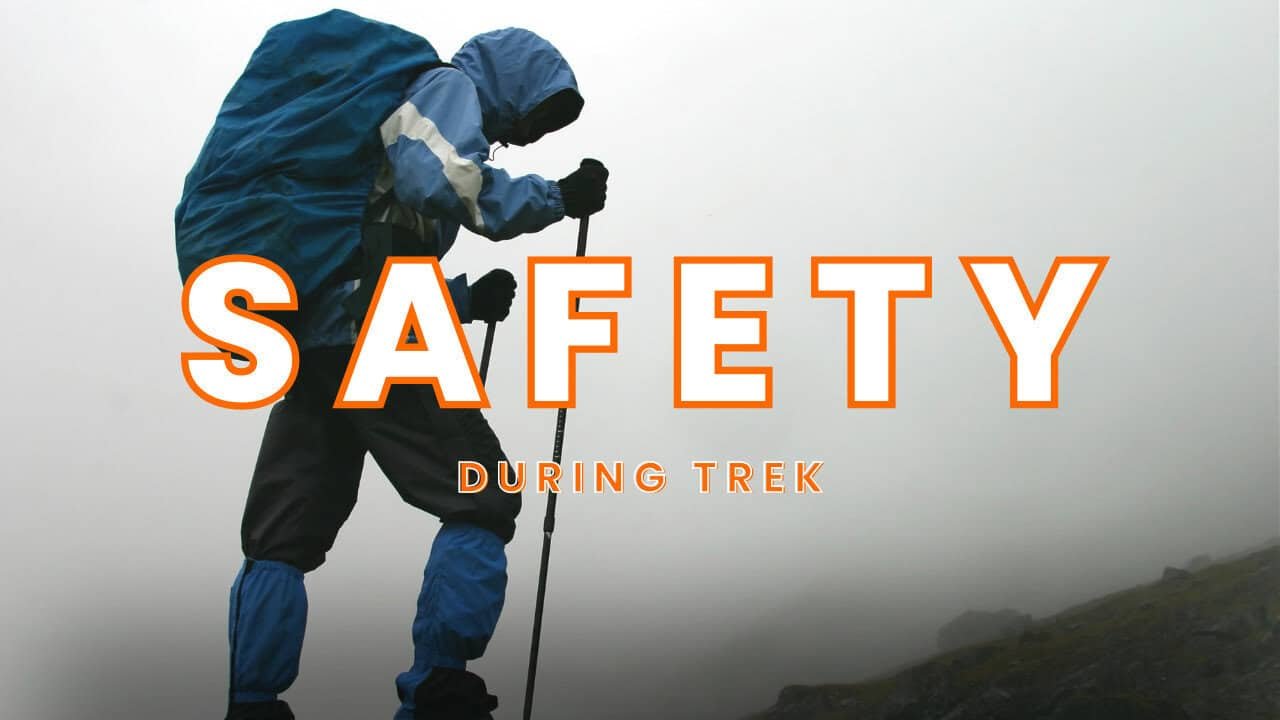
Trekking with us for the Pir Panjal Lakes Trek is entirely safe because we have a team of trek leaders qualified in Wilderness first-aid and complete information about the high-altitude glitches. During the trek, we carry a full first-aid kit that contains all the essential medicines. Before trekking with us, you must ensure that you are medically fit for the trek; for us, your medical fitness is more important than anything else.
Right from our establishment, we at Trekup India have been continuously introducing new safety practices into Indian trekking to ensure the safety of voyagers. Trekup India introduced microspikes and made emergency bottled oxygen mandatory for all treks. Our trek leaders take your daily Pulse oximeter reading. We at Trekup India introduced the radio walkie-talkie as a safety communication device.
How can we ensure that your trek is safe with us?
We have noticed that most trek-organizing organizations do not follow these systems, but with time, they are following us; several competing companies are adopting these practices and organizing great, safe treks.
We ensure complete technical safety in the mountain. Our company has a vast team of more than 100 guides and trek leaders who serve on Himalayan treks. One of the best things about our team is that all the members are trained professionally by the Nehru Institute of Mountaineering, Indian Mountaineering Foundation Delhi, and Hanifle Center Outdoor Education Mussoorie.
Explore our New Safety Protocols
To ensure a perfect Trek, we have introduced some new safety checks to ensure excellent safety for our trekkers.
Our On-trek safety checks include:
- Daily oxygen saturation, along with pulse readings
- Stretchers team appointed on every trek
- Radios
- Trained mountain staff and complete safety
- Additional oxygen cylinders
- Special medical kit for high-altitude treks
- Microspikes on all types of snow treks
- Experienced Trek leaders, as well as safety
- Technical team on all snowy slopes
For Us, Your Safety Is the Top Priority
At Trekup India, you will find a team with local knowledge and fluency in English and Hindi. This helps ensure that you have a fantastic trek. Not only this, but we also pay attention to your health and safety because this is something we cannot ignore. All the team leaders involved in trekking have already undergone several professional courses in first aid, portable altitude chamber training, CPR, environmental awareness training, and advanced wilderness emergency medicine.
We also carry a complete first aid medical kit on every trek and trip we organize. Apart from the medical kit, we take a portable altitude chamber (if needed) and medical oxygen for all high-altitude treks. Our company has significant expertise in organizing all sorts of group adventure holidays for family groups, school and college groups, and friend groups. We have many travel options that suit different fitness levels and travelling styles.
Regardless of the group size, we value each and every member of our trekking groups. Our commitment to personal attention ensures that your needs and safety are always our top priority.
Who we are?
Trekup India has been a stalwart in the Adventure Tourism industry for 30 years. Since our inception, we have been dedicated to providing top-notch treks, voyages, trekking programs, and high-altitude expeditions. Our extensive experience is a testament to our commitment to your adventure and safety.
We organize treks in Uttarakhand, Kashmir, Sikkim, and Himachal while being part of the trekking community; we feature more than 75 documented Himalayan treks. In addition to other outdoor activities, our company also organizes trips for schools, colleges, and families.
Therefore, we maintain the quality of services offered to our valuable customers.
Must Read These Information Of Pir Panjal Lakes Trek
Why You Should Do Pir Panjal Lakes Trek
Experience the beauty of ten breathtaking alpine lakes on the Pir Panjal Lakes Trek in Jammu. It involves a four-day trek to reach these stunning lakes, but the journey is rewarding. Spend the following two days discovering and immersing yourself in the charm of each lake. Consider camping beside Chandansar, which is among the larger lakes in the region.
Experience camping on the vast meadows of Poonch during the Pir Panjal Lakes Trek. Discover small hills, groups of coniferous trees, designated sunset spots, and viewpoints that provide excellent vistas of the valley and mountains.
The enchanting forest, with its diverse array of coniferous trees, conjures up an atmosphere of mystery and wonder. The dense foliage creates a sense of secrecy, as if the forest is revealing its hidden treasures only to those who dare to venture deeper. Strategically placed clearings throughout the forest enhance the magical experience, providing a respite from the dense vegetation and offering breathtaking views. Every turn of the trail brings a new surprise, making the trek an exhilarating adventure.
Best time to do Pir Panjal Lakes Trek
If you’re planning to go on Pir Panjal Lakes Trek, you should consider visiting between late June and early September. During this time, the Jammu and Kashmir Valley experiences very little rainfall, making it an ideal season for trekking. The trail is usually covered in snow during all other seasons, making it difficult to pass through. However, the scenic beauty of the Pir Panjal Lakes Trek is transformed throughout June, July, August, and September, offering a unique and breathtaking experience during each month. So, plan your visit accordingly to make the most out of your trekking experience.
How Difficult is the Pir Panjal Lakes Trek
The Pir Panjal Lakes Trek presents a moderate to difficult challenge due to various factors. The trek involves a rapid ascent from Chandimarh, which can be pretty demanding despite the relatively low highest point. Expect a strenuous climb on the first day, with daily altitude gains of 2,500-3,000 ft and steep inclines, including a 3,500 ft ascent. This rapid gain in elevation increases the risk of Acute Mountain Sickness (AMS). The trek includes multiple uphill and downhill climbs, three mountain passes, and significant daily distances averaging 8-9 km, totaling 52 km over six days. However, with careful pacing and acclimatization, this challenge can be managed with a well-planned itinerary like Trekup India’s.
In terms of the terrain, the journey requires navigating boulder-filled sections of varying sizes, especially challenging during the ascent to the lakes and strenuous on the legs, particularly in wet conditions. It’s crucial to wear high-quality trekking shoes with a firm grip for better traction. While the trek offers accessible routes with fewer technical challenges, any alterations to the schedule, such as skipping a campsite, can heighten the risk of AMS, making it important to remain vigilant for any discomfort indicating AMS. Moreover, caution is advised during the steep ascent and descent to and from Nandansar, especially in rainy or whiteout conditions. Once again, suitable trekking shoes are essential for safety in these terrains.
Frequently Asked Questions About Pir Panjal Lakes Trek
What is the duration Of the Pir Panjal Lakes Trek?
Its 6 nights and 7 days trek.

